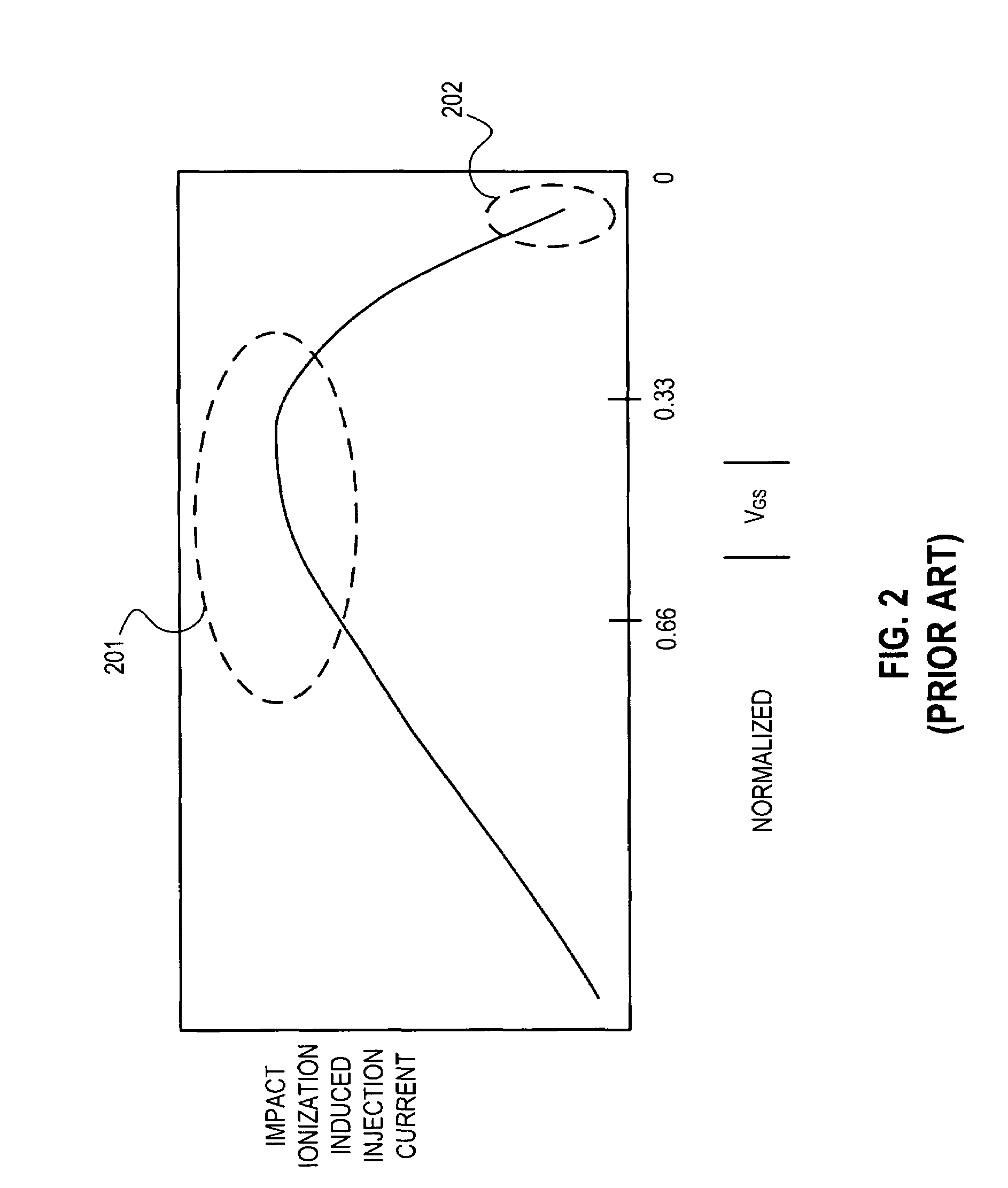Non-volatile memory cell circuit with programming through band-to-band tunneling and impact ionization gate current
a non-volatile memory and gate current technology, applied in static storage, digital storage, instruments, etc., can solve the problems of insufficient qb>1/b>, insufficient amount of high-energy electrons, and inability to control these transport mechanisms
- Summary
- Abstract
- Description
- Claims
- Application Information
AI Technical Summary
Benefits of technology
Problems solved by technology
Method used
Image
Examples
Embodiment Construction
[0033]FIG. 3A shows a circuit diagram for an improved non volatile memory cell that avoids the problems described above with respect to the prior art circuit of FIG. 1. FIG. 3B graphically depicts a possible design point for the circuit of FIG. 3A that is directly comparable to FIG. 2.
[0034]Referring to FIG. 3A, transistor Q1 and the Fowler-Nordheim tunneling transistor Q3 (noting that reference Q2 was used for the tunneling transistor with reference to FIG. 1) operate as described above with respect to FIG. 1. That is, during a PROGRAM phase, high energy electrons (created from lattice collisions with carriers accelerated in Q1's conductive channel) are supposed to be injected to the floating gate 301 from the substrate portion of transistor Q1 thereby lowering the floating gate 301 charge level and corresponding voltage to a first logical state. Moreover, during an ERASE phase, electrons are removed from the floating gate 301 by Fowler-Nordheim tunneling through the gate dielectri...
PUM
 Login to View More
Login to View More Abstract
Description
Claims
Application Information
 Login to View More
Login to View More - R&D
- Intellectual Property
- Life Sciences
- Materials
- Tech Scout
- Unparalleled Data Quality
- Higher Quality Content
- 60% Fewer Hallucinations
Browse by: Latest US Patents, China's latest patents, Technical Efficacy Thesaurus, Application Domain, Technology Topic, Popular Technical Reports.
© 2025 PatSnap. All rights reserved.Legal|Privacy policy|Modern Slavery Act Transparency Statement|Sitemap|About US| Contact US: help@patsnap.com



